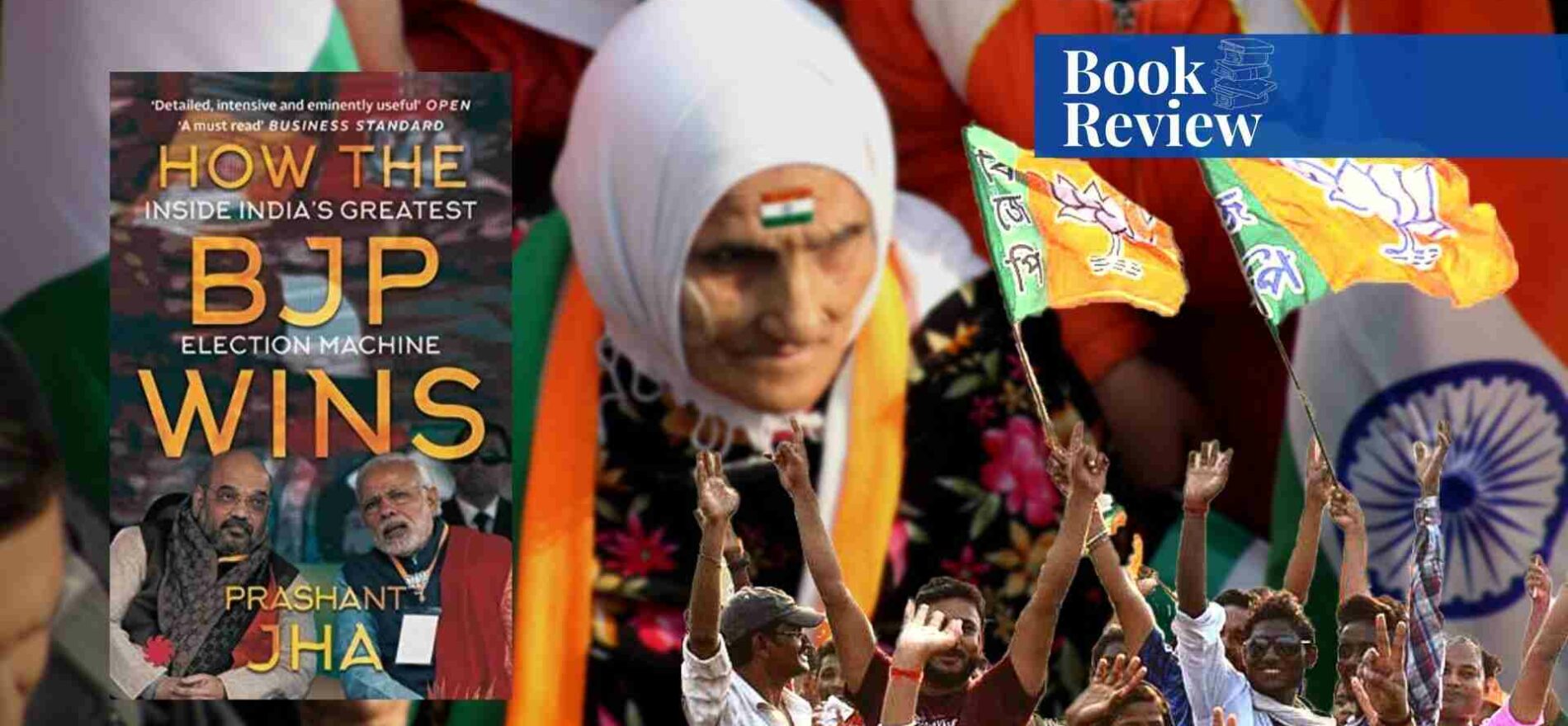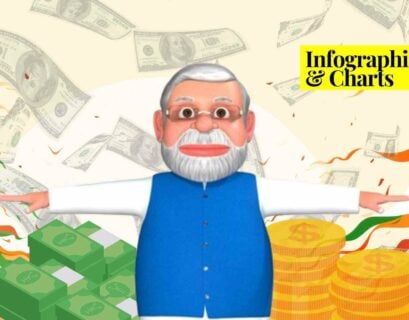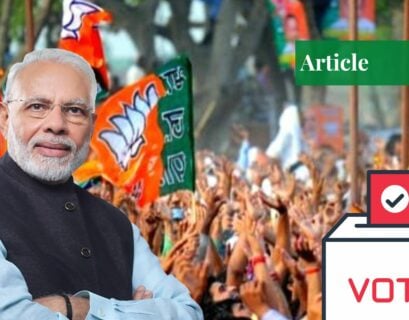Nimra Dawood is an undergraduate student, pursuing a degree in international relations from National Defence University, Islamabad. She is interested in current affairs, geopolitical trends, regional political dynamics, and power transition in the international arena. She loves to critically analyze the changing dynamics of the world and the motives of key actors.
The Author
The author of “How the BJP Wins: Inside India’s Greatest Election Machine,” Prashant Jha, is a Washington DC-based correspondent of Hindustan Times. Jha has the experience of being appointed as the editor-views and national political editor of the Hindustan Times.
For acquiring the primary data for the research of this book, the writer has visited various areas of India that are considered to be the hotspot of the BJP including Uttar Pradesh and Assam.
Narendra Modi
“How the BJP Wins: Inside India’s Greatest Election Machine” is primarily divided into eight chapters including an introduction, with each chapter playing the role of an important bead in creating the necklace of the BJP’s impressive rise in the secular and orthodox society of India.
Like every other discussion concerning the victorious face of the party, Jha has also focused primarily on the personality cult of Narendra Modi which has played an important role in transforming the party’s outlook from the mere representative of the upper class and castes to a national party of Hindus in India with huge support from the middle class and the Other Backward Classes (OBC).
The public has seen Modi as a “political Messiah” who can solve every problem faced by India. People are often seen repeating his dialogues while justifying his policies and their firm support for the party. Based on these populist sentiments, Modi has considered it his dharma to win elections and maintain his political power.
Amit Shah
The second chapter of “How the BJP Wins: Inside India’s Greatest Election Machine” yet again focuses on one of the most important figures in the rise of the BJP: Amit Shah. The writer has beautifully traced the historical roots and developed the personality of Shah that is reflected today in the organizational skills employed by the party.
Soon after getting the charge of UP in 2013, Shah realized the problems in the party’s approach towards different segments of society; where Muslims (around 20%) were starkly against the political agenda of BJP because of its affiliation with RSS, the remaining lower classes and castes could be moulded in favor of party’s support that would allow the party to maneuver in 55-60% of the population.
Shah executed this plan by utilizing an independent network of information and organizing a system that would increase the workers’ mobilization at ground levels. This led to the inculcation of around nine crore new members into the existing structure of the party, making it one of the biggest parties in the world.
After the identification of six major political issues in India including law and order, women’s safety, corruption, jobs, migration, and appeasement of Muslims and minorities, the entire political agenda and policy of the party were designed to address them so that a large number of people could be attracted.
Amit Shah’s strategy was to follow a “60 percent formula” which resulted in extremism and polarization of the society. Hence, Shah has emerged as the “Chanakya” of the BJP who is well-equipped in understanding society, identifying gaps, and exploiting them.
BJP & RSS
Chapter four of the book discusses one of the notoriously known topics of contemporary politics of India, the relationship between the BJP and RSS. The BJP has moved towards a more socially inclusive political system, with a huge voting base from lower castes of the Hindu social order, and an excessive personality cult of Narendra Modi which is not aligned with the ideological grounds of the RSS.
However, it remains the support and base of the party on an ideological front where policies are highly influenced by it and its feedback. Moreover, the rise of Modi himself has to be seen as a success of one of the students of RSS, not a mere personality. The writer has provided a detailed account of the othering of the Indian electoral system by making it a “Hindu-Muslim Chunav” where the BJP has been involved in communal riots and violence to extract political benefits out of it.
Through the network of political workers at the root level, a discourse has been generated by the BJP that it is the sole Hindu nationalist party in India that will end the era of appeasement towards Muslims by all the existing parties that have deprived Hindus of their rights. Such extreme polarization has harmed the secular nature of India, with Hindu Nationalists equating Indian Muslims with Pakistanis.
The BJP has seen a spark in its liking throughout India, even in areas with no previous record of its followers. The future of this “hegemon party” is based on some factors including the charisma of Modi, the inculcation of the caste system, the disruption of social harmony and the end of secularism, and the fall of other political parties, especially Congress.
The opposition has to decide on the role of leadership and the creation of an attractive and credible narrative to attract the public, otherwise, the Modi-Hawa will only grow in the upcoming years.
Discussion and Analysis
The tone adopted by Prashant Jha throughout the book is quite intriguing and curious with a level of casualty in it that can be seen through the use of slogans and statements in Hindi on several occasions. Throughout the book there have been narrative-driven interviews with the BJP members; however, a huge dependence for all this evidence has been on Sunil Bansal and Ram Madhav. This creates an impression that the book has not incorporated the ideas and narratives of other key members of the party.
Similarly, a crucial narrative associated with the BJP regarding religious politics has also been inferred through the interviews with the above-mentioned sources of Jha. However, the book has mentioned some interesting issues like the source of financing for the BJP, the appointment of Adityanath Yogi, the inner perception of the RSS regarding the changing political discourse of the BJP, and the electoral policies of Amit Shah.
However, these details should be counter-checked as no linkage between Amit Shah, Adityanath, key RSS leaders and the author has been found. Yet, the book can be an interesting read for any person interested in the populist politics of India and the use of technology and networking in forming a political environment that makes electoral success easier than ever.
In addition to this, “How the BJP Wins: Inside India’s Greatest Election Machine” has presented a balanced analysis where the author has been impressed with the organizational and strategic thinking of Amit Shah and the transformation that the BJP has brought to the political system after 2014. Similarly, the author’s account of religious and sentimental exploitation by the party is a good addition to one’s knowledge about the BJP government.
Interestingly, the elections of 2019 in India proved the writer’s point correct as the biggest contributing factor to the largest victory of the BJP-led alliance was because of the personality cult of PM Narendra Modi, his anti-Pakistan and anti-Muslim narrative, organizational skills of his party members along with the failure of opposition parties to win the hearts and minds of the public.
Therefore, the current conditions in India show that the public has stood with the narrative shaped by Modi because they see no alternative to his party system. If this continues, the rise of Modi will be inevitable.
Conclusion
“How the BJP Wins: Inside India’s Greatest Election Machine” is an interesting read for anyone interested in knowing about the rise of the BJP in India. The book gives a complete and analytical package of several factors that have contributed to the rise of the BJP. No doubt, it does not give the entire story of the issue, but it is important for connecting several dots of information regarding Indian politics and elections.
If you want to submit your articles/research papers/book reviews, please check the Submissions page.
The views and opinions expressed in this article/paper are the author’s own and do not necessarily reflect the editorial position of Paradigm Shift.


















